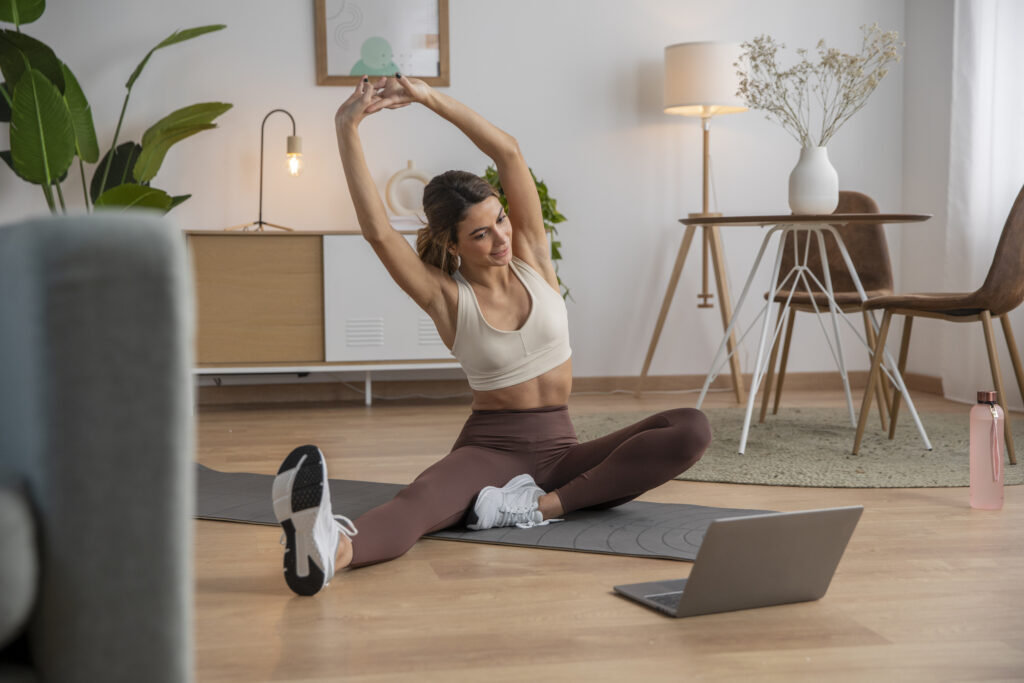You might not realize how much your posture affects your health, but it plays a vital role in your overall well-being. Poor posture can lead to discomfort, decreased energy, and even long-term health issues. By simply adjusting how you sit, stand, and move, you can alleviate these problems and enhance your daily life. But where do you start? Understanding common mistakes and implementing effective strategies can make a significant difference. Let's explore some practical steps that can help you transform your posture and, in turn, your health.
Benefits of Good Posture
Good posture isn't just about standing tall; it's essential for your overall health. When you maintain good posture, you're not only projecting confidence, but you're also providing your body with the support it needs to function effectively. Proper alignment of your spine helps reduce strain on your muscles and ligaments, which can lead to fewer aches and pains in your back and neck.
Additionally, good posture improves your breathing. When you sit or stand up straight, your lungs have more room to expand, allowing you to take deeper breaths. This increased oxygen intake enhances your energy levels and boosts your mood, helping you feel more alert throughout the day. You might even notice that you're less fatigued during long hours at your desk.
Moreover, good posture can enhance your digestion. When you sit with your spine aligned, you enable your organs to function properly without unnecessary compression. This can lead to better digestion and even fewer gastrointestinal issues.
Finally, maintaining proper posture can improve your focus and concentration. When your body is aligned, blood flow improves, delivering more nutrients and oxygen to your brain. This can help you stay sharp and productive, whether you're at work or studying.
Incorporating good posture into your daily life can lead to a myriad of health benefits. So, pay attention to how you sit and stand, and you'll likely notice a positive shift in your overall well-being.
Common Posture Mistakes
Many people unknowingly fall into common posture mistakes that undermine the benefits of good alignment. One of the biggest culprits is slouching, which often happens when you're sitting or standing for long periods. You might find yourself hunching your shoulders or leaning forward, making your spine curve in ways it shouldn't. This can lead to discomfort and even chronic pain over time.
Another common mistake is crossing your legs while sitting. While it might feel comfortable initially, this position can throw your pelvis out of alignment and create tension in your hips and lower back.
You may also be guilty of craning your neck forward, especially when looking at screens. This forward head posture strains your neck and upper back, leading to stiffness and headaches.
Many people also underestimate the importance of footwear. Wearing high heels or ill-fitting shoes can dramatically affect your posture, causing misalignment from the ground up.
Additionally, if you're often seen leaning on one leg while standing, you're likely placing uneven pressure on your back and joints, which can result in discomfort.
Lastly, don't ignore your core muscles. Weak abdominal muscles can lead to poor posture, as they don't provide the support your spine needs.
Tips for Better Sitting
To promote better sitting habits, focus on your chair and workspace setup. An ergonomic chair designed to support your lower back is essential. Adjust the height so your feet rest flat on the floor or on a footrest. Your knees should be at or slightly below hip level.
Here are some practical tips to enhance your sitting posture:
- Choose the right chair: Opt for a chair with lumbar support that fits your body.
- Position your monitor: Keep your screen at eye level to prevent neck strain. The top of the monitor should be at or slightly below eye level.
- Use a cushion: If needed, a small cushion can help maintain the natural curve of your spine.
- Keep your arms at a 90-degree angle: Your elbows should rest comfortably on the armrests or desk, avoiding strain in your shoulders.
- Take breaks: Stand up and stretch or walk around every 30 minutes to relieve tension.
Implementing these changes in your workspace can greatly improve your posture while sitting.
Remember, your body deserves support, and small adjustments can lead to lasting benefits. By creating a comfortable environment, you'll not only enhance your productivity but also protect your health in the long run.
Start making these adjustments today, and you'll feel the difference!
Exercises to Strengthen Posture
Strengthening your posture involves incorporating targeted exercises into your routine. These exercises can help build the muscles responsible for maintaining an upright position, ultimately reducing strain and discomfort.
Start with the plank. Position yourself face down, resting on your forearms and toes. Keep your body straight and hold this position for 20 to 30 seconds. As you get stronger, aim for longer durations.
Next, try the wall angel. Stand with your back against a wall, feet about six inches away from it. Press your lower back, shoulders, and head against the wall. Raise your arms to form a "W" shape, then slowly slide them up to form a "Y." Keep your arms and back touching the wall throughout the movement. Repeat this for 10 repetitions.
Another effective exercise is the bird-dog. Start on your hands and knees. Extend your right arm forward while simultaneously extending your left leg back. Hold for a few seconds, then return to the starting position. Alternate sides for 8 to 12 repetitions per side. This exercise helps improve balance and strengthens your core.
Finally, incorporate chest stretches. Stand tall and clasp your hands behind your back. Gently pull your shoulders back and down, opening up your chest. Hold this position for 15 to 30 seconds.
Regularly practicing these exercises can greatly enhance your posture, leading to improved health and overall well-being. Commit to these movements, and you'll notice a difference in how you carry yourself throughout the day.
Daily Habits for Improvement
Improving your posture isn't just about exercises; it also involves making small adjustments in your daily habits. You mightn't realize it, but your routine can notably impact your posture.
By incorporating these simple changes, you'll be on your way to standing taller and feeling better.
Here are five daily habits you can adopt to improve your posture:
- Mind Your Sitting Position: Keep your feet flat on the ground and your back straight when sitting. Use a chair that supports your lower back.
- Adjust Your Workstation: Make sure your computer screen is at eye level and your keyboard is within comfortable reach to prevent slouching.
- Take Frequent Breaks: Stand up, stretch, and walk around every hour. This helps relieve tension and encourages good posture.
- Use a Supportive Bag: If you carry a bag, choose one that distributes weight evenly across your shoulders. Avoid heavy loads on one side.
- Practice Mindfulness: Throughout the day, take a moment to check in with your posture. Are you slouching? Straighten up!
Conclusion
Improving your posture is a simple yet powerful way to enhance your health and well-being. By recognizing the benefits, correcting common mistakes, and implementing tips and exercises, you can make significant strides toward better posture. Remember to integrate these habits into your daily routine, and you'll not only feel better physically but also enjoy increased focus and energy. Start today, and watch how your life transforms with just a few mindful adjustments!

